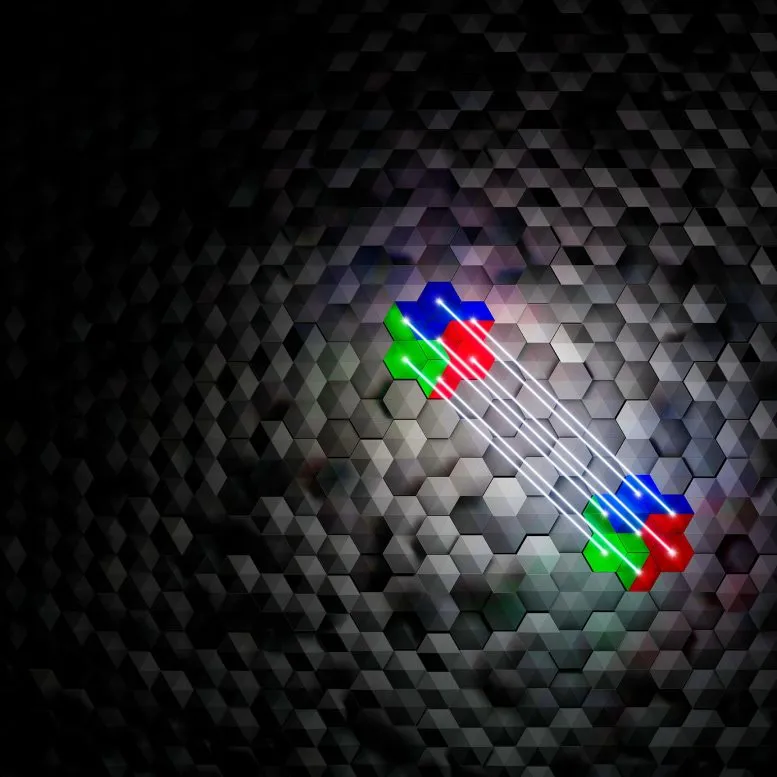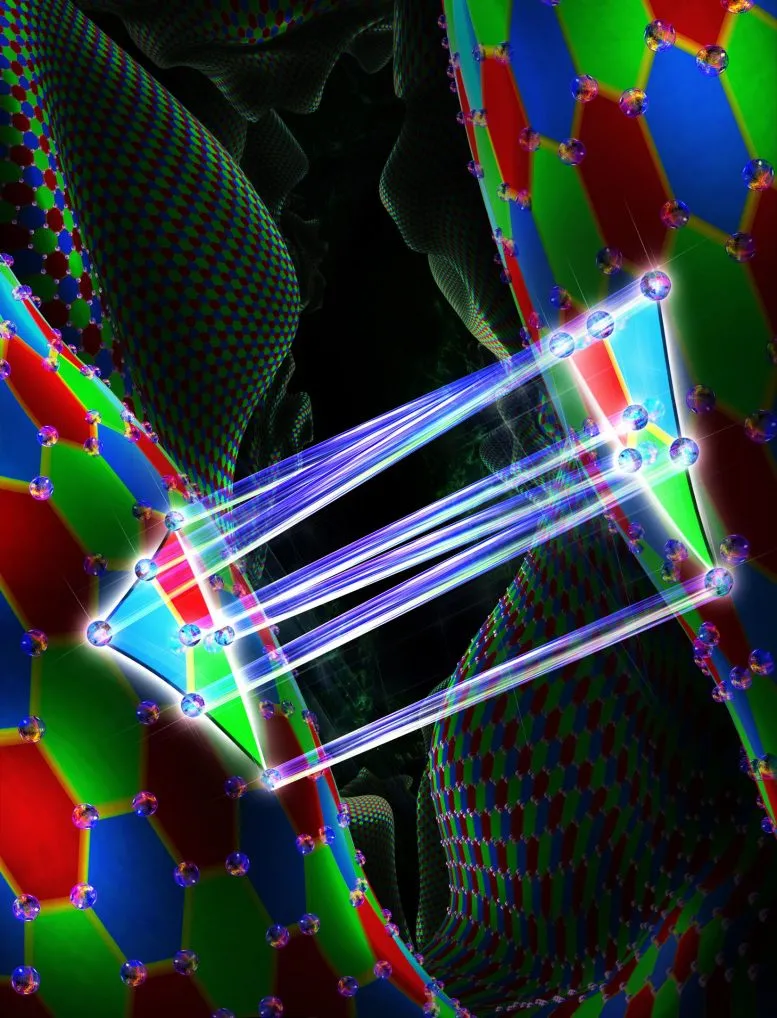Due to the high-quality manufacturing process, errors in the process of processing and storing information in modern computers have become very rare. However, for key applications, even a single error will have a serious impact, so the verification and error correction mechanism based on the redundancy of processing data is still widely used Quantum computers are inherently more susceptible to interference than traditional computers, so error correction mechanisms are almost always required. Otherwise, the error will propagate uncontrollably in the system, resulting in the loss of information

The artist's impression of the gate operation of logical qubits, which protect their operational accuracy through quantum error correction.
Since the basic laws of quantum mechanics prohibit the replication of quantum information, redundancy can be achieved by distributing logical quantum information into the entangled states of several physical systems, for example, multiple individual atoms.
The research team led by Thomas Muntz of the Department of experimental physics of Innsbruck University and Marcus Muller of Aachen University of technology and Ulrich research center in Germany has now successfully realized a set of computing operations on two logical qubits for the first time, which can be used to realize any possible operation. Lukas Postler, an experimental physicist from Innsbruck, explained: "for a real-world quantum computer, we need a set of general gates to program all algorithms."
Realize basic quantum operation
The research team realized this universal gate group on an ion trap quantum computer with 16 trapped atoms. Quantum information is stored in two logical qubits, each of which is distributed over seven atoms.
For the first time, researchers have implemented two computation gates on these fault-tolerant qubits, which is a necessary condition for a general gate group: computation operations on two qubits (CNOT gates) and logic t gates, which are particularly difficult to implement on fault-tolerant qubits.

Demonstrate the basic building blocks of fault-tolerant quantum computing. Source: uni innsbruck/harald ritsch
Theoretical physicist Marcus Mueller explained: "t gates are very basic operations. They are particularly interesting because quantum algorithms without t gates can be simulated relatively easily on classical computers, negating any possible speed increase. For algorithms with t gates, this is no longer possible."
Physicists demonstrate T-gates by preparing a special state in a logical qubit and transferring it to another qubit through entanglement gate operation.
Increased complexity, but also increased accuracy
In the encoded logical qubits, the stored quantum information is protected from errors. However, if there is no calculation operation, there is no use without errors. Moreover, these operations themselves are error prone.
Researchers have implemented operations on logical qubits in such a way that errors caused by basic physical operations can also be detected and corrected. Therefore, they implemented the first universal gate group fault-tolerant implementation on the encoded logical qubits.
"The implementation of fault-tolerant requires more operations than non fault-tolerant operations. This will introduce more errors on the scale of a single atom. However, experimental operations on logical qubits are still better than non fault-tolerant logical operations," Thomas Muntz said happily. "Increased overhead and complexity, but better quality." The researchers also used numerical simulations on classical computers to check and verify their experimental results.
Physicists have now demonstrated all the building blocks for fault-tolerant computing on quantum computers. The next task is to implement these methods on larger and more useful quantum computers. The method demonstrated in Innsbruck's ion trap quantum computer can also be used in other quantum computer architectures.